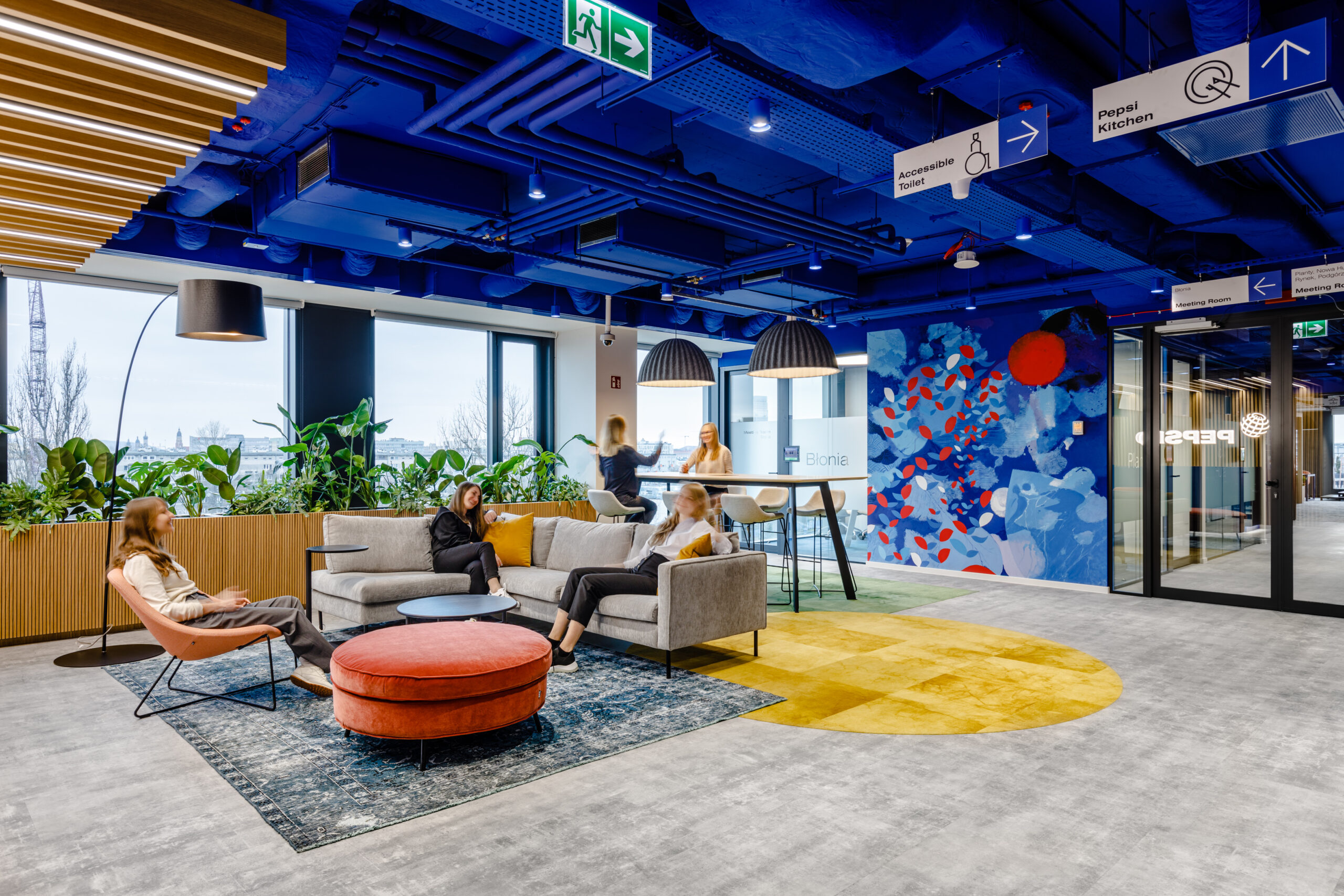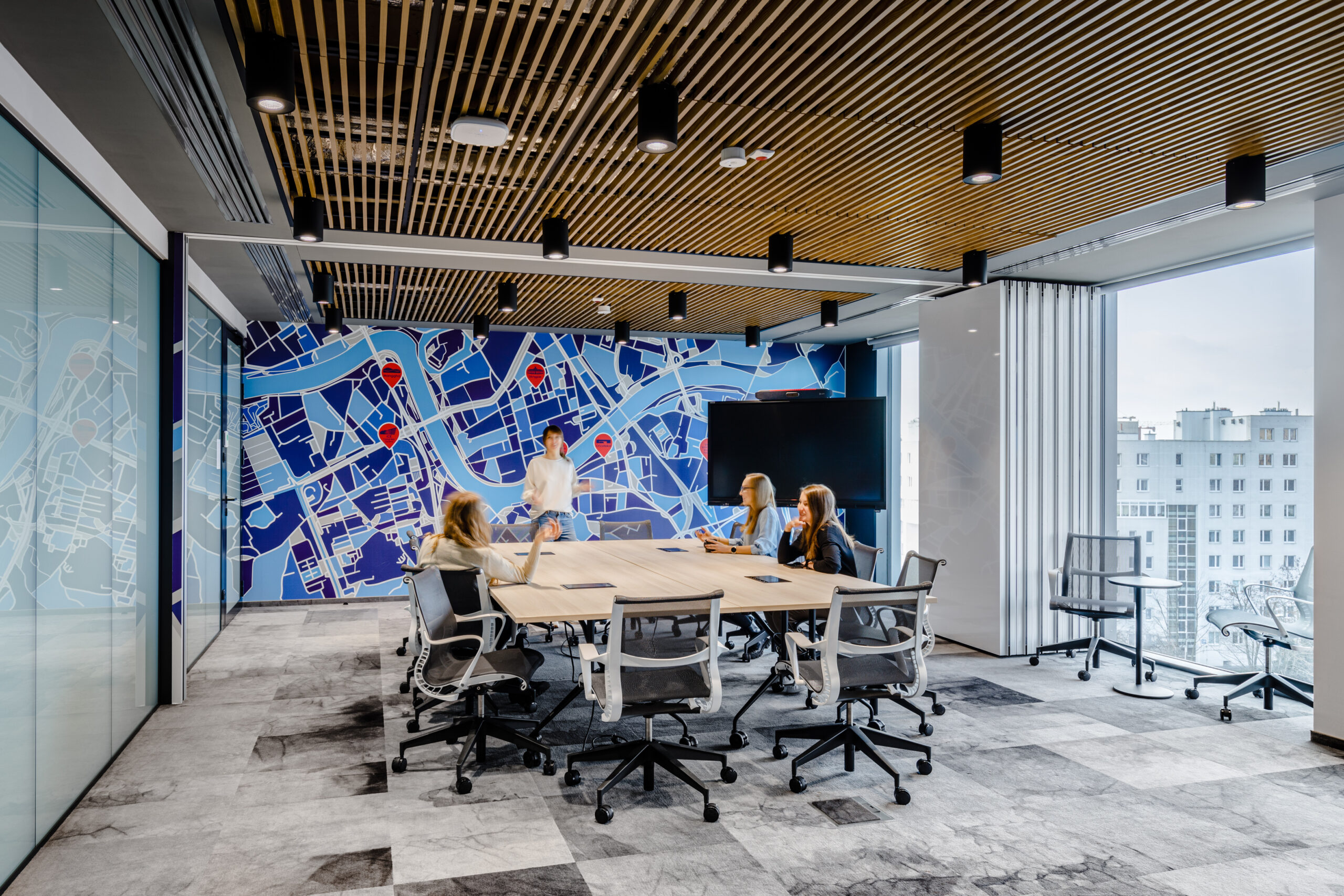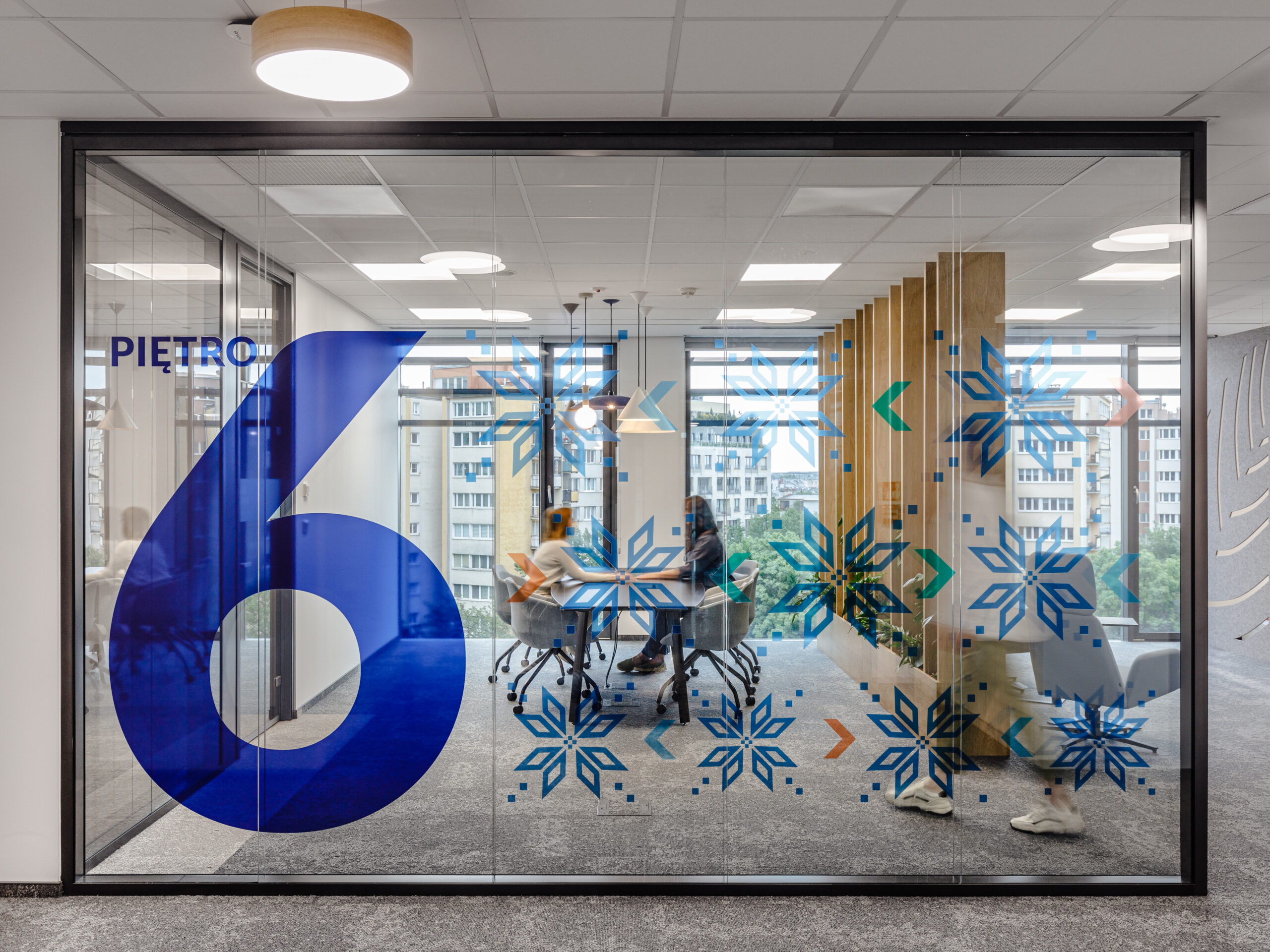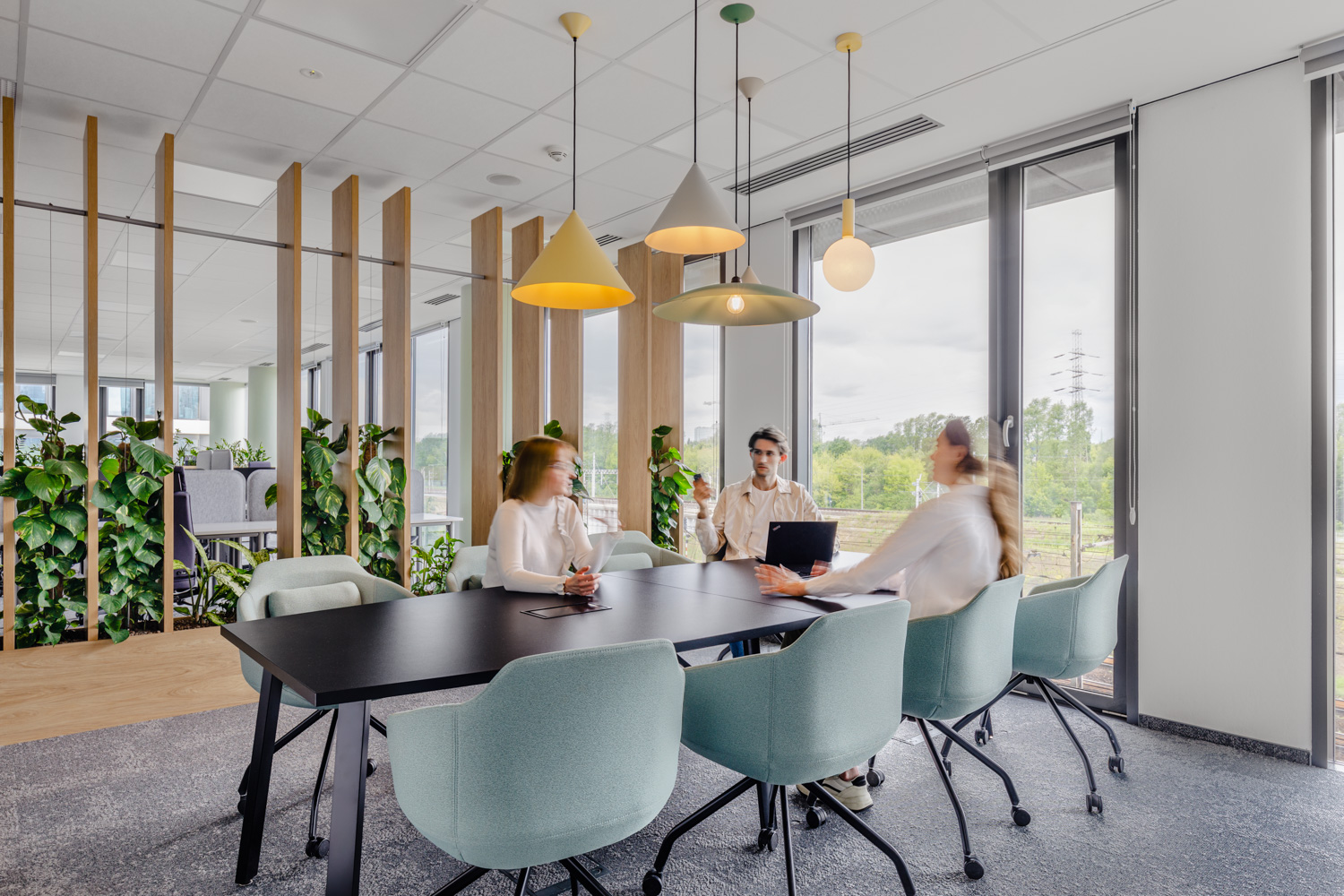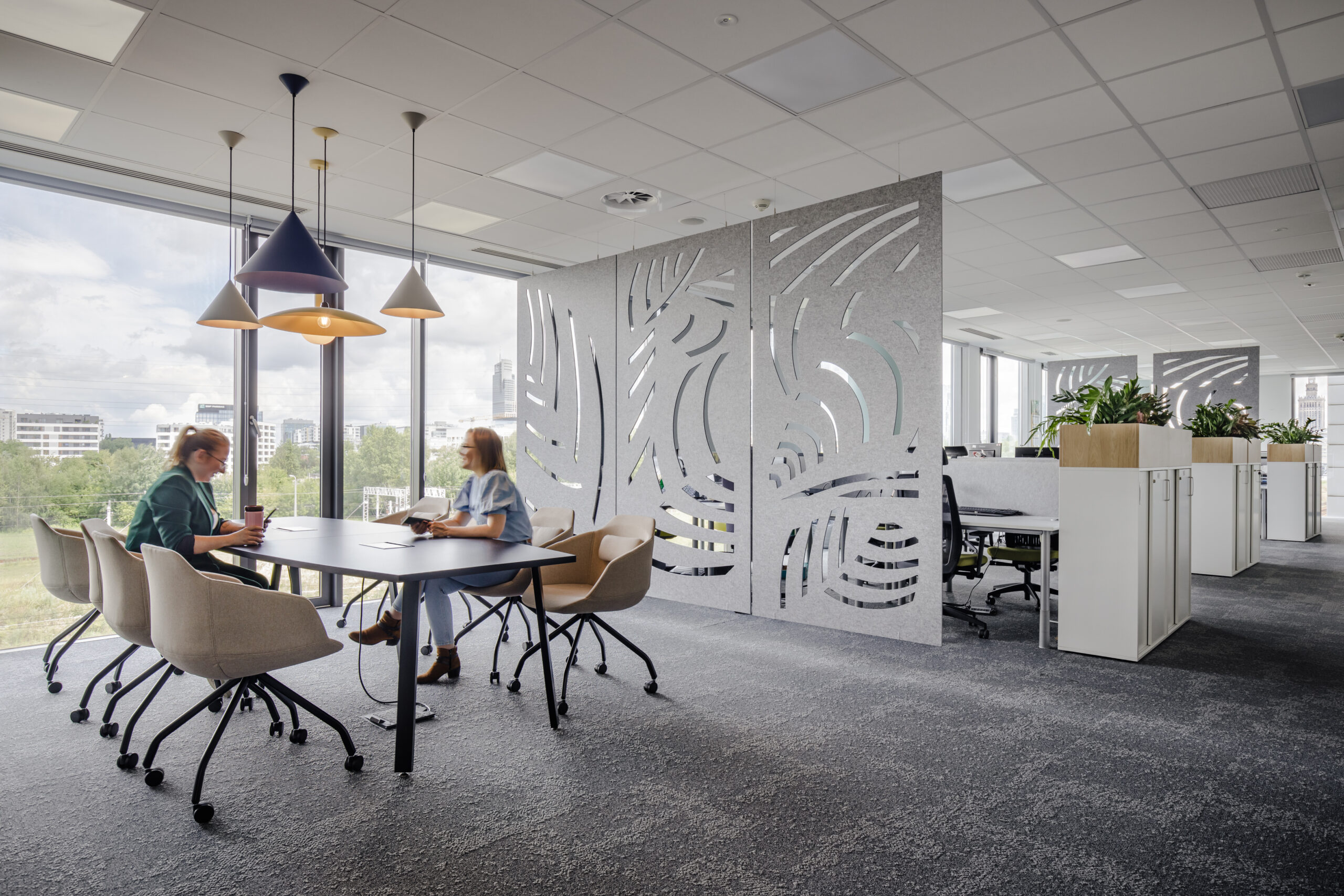ESG design principles for office interiors
The interiors of commercial buildings should be designed according to sustainable principles. Everyone agrees on this: architects, engineers, owners and tenants. However, implementing these principles is not easy, especially when everyone – and everything – is talking about ESG. The choices to be made along the way are far from black and white contrasts. How can ESG principles be applied to office design?
- Global ESG strategies implemented locally are increasingly influencing the expectations of tenants looking for new premises – including the fit-out process.
- ESG-compliant results can be achieved by implementing sustainable solutions as early as possible and in all subsequent steps: from the design, its functional layout, lighting, finishing materials, and furniture.
- Implementing sustainable design in the office market requires a willingness to compromise on the part of future users.
- Using ‘recycled’ elements in office interiors is a challenge, but one that is well worth the effort.
In the age of hybrid working, the office has become more than ever an expression of an organization’s philosophy. As a result, few tenants looking for new premises today do not consider the ESG category in their initial discussions. After all, sustainable design can mean out-of-pocket costs, extra time to find favorable solutions, or having to accept compromises. The extent to which a sense of mission rewards the resulting inconvenience is an individual question. In the not too distant future, however, there will be no place in the office market for space that has been created without taking into account the environmental and social aspects.
[…] in the not too distant future, there will be no place in the office market for space created without taking into account the environmental and social aspects.
Design minimalism
Doing things quickly, cheaply, well. Take your pick… One of the hallmarks of sustainable design is the elimination of unnecessary elements; those that age quickly; those that are exotic and have a large carbon footprint. Many spaces that are rarely used – elements that only a few years ago ensured office layouts a place in the pages of architecture magazines – are losing their raison d’être in the new reality. This is not to say that there is no room for individual expression in the modern office, but it must be subordinated to a rational plan. Paradoxically, solutions designed to save energy or other resources sometimes fall under the same razor’s edge, as it may turn out that the payback period for infrastructure elements exceeds the expected life of the office.
The earlier, the more ESG
Where does the design of a ‘green office’ start? Certainly not with technical gadgets or the arrangement of plants in the interior. It is a long-term and multifaceted process that begins at the stage of the building’s location, orientation in relation to the world’s sides and nearby buildings.
Mistakes or false economies made in the design of a building can later prevent optimum access to natural light or hinder the arrangement of rooms. The ideal scenario is for the designer to work with sustainability specialists throughout the process, from the initial general guidelines to the selection of finishes. If the space we are moving into is empty, it is worth considering whether we can use some elements from our previous office and incorporate them into the design of the new space. On the other hand, if we’re moving into an office that already has furniture from the previous company, we should think about whether we can use anything, such as partitions or doors, before deciding to get rid of them.
Of course, design in the ESG trend should not only consider environmental impact but also the needs of different user groups, including people with physical limitations. This results in office spaces that are easily accessible by wheelchair; accessible reception areas; circulation routes that meet the needs of the visually impaired.
Local sourcing
To reduce the carbon footprint of investments, it is advisable to use materials that are produced or sourced as close as possible to the construction site – ceramic tiles from local manufacturers, European species of wood rather than exotic ones that require the cutting down of rainforests. As in a doctor’s surgery, primum non nocere remains the guiding principle. Can buying a carpet that can be recycled still be considered ecological if the material to be recycled has to be sent to a factory on the other side of the continent?
Circularity?
The transition to a circular economy requires the reuse, renovation, and adaptation of existing facilities and spaces. These activities are challenging to implement in practice, but it is always worth trying.
Rental contracts in Poland are usually signed for 5, 7, and sometimes even 10 years. Good quality office furniture still performs its function after such a period of use, although sometimes it does not look good enough due to wear and tear. Renewing it, replacing the upholstery, filling in missing parts, and painting it requires manual labour, but has a huge upside. Such furniture has a much lower carbon footprint, the company is not contributing to the production of new furniture, and the reuse activities fit perfectly with the organization’s pro-environmental goals. Buying new furniture is easier and cheaper, but from a sustainability perspective, these are the only benefits.
The alternative – moving into the existing space – is not acceptable to tenants in practice. The scale of the difficulty increases with the size of the building. However, in terms of reducing the carbon footprint, reducing construction waste or preserving the urban fabric, a desirable strategy is to revitalize older spaces and try to adapt them to their needs.
Office user as an ambassador of change
Sustainable design is a complex process, and technical solutions are only part of it. The actions of users are at least as important. Lowering the temperature in an office translates directly into energy savings; the best waste separation system will not work if tenants are not involved in its use. Design ESG cannot exist without education and interaction. In turn, the office becomes a tool for creating a new culture, a culture of change.

